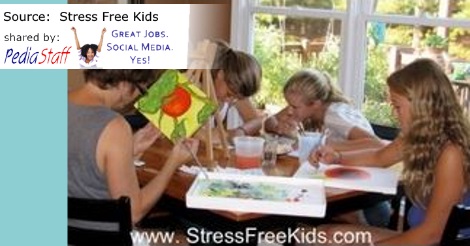Teaching Children Patience with Summer Activities

Editor’s Note: This article is directed at parents, but these activities would be excellent for therapy in a lesson on patience!
[Source: Stress Free Kids]
Did you ever wish your children had more patience? Do you remember the days when you yourself had more patience? Summer fun can be a valuable lesson for teaching children patience.
When your and your children are comfortable with being patient, you will feel more at ease and tend to be less stressed.
Here are 5 easy and fun activities you can try this summer to heighten mindfulness and increase patience.
Nature: Who can resist insect watching? Have ladybugs (Ladybug Land) delivered to your mailbox and “watch the small larvae eat and drink from special gels, form cocoons, and emerge as adult ladybugs.”
Painting: Painting can teach kids the value of patience. Just waiting for the paint stroke to dry before adding another takes patience that many adults and children do not have. When children do not have patience painting they can see actually see the outcome of their impatience. Adding too many colors while they are wet will result in changing the color to mud. When they are patient enough to allow the paint to dry, they will see vibrant colors. What a fun activity to have the two paintings side by side.
Puzzles: Puzzles are a wonderful patience-teaching tool. Often children will exhibit more patience and less frustration doing a puzzle than their parents. Resist the urge to help your child find the place for that piece, especially when they are fine with spending a lot of time on it. Take some deep breaths and commend your child and yourself for being patient.
Read the Rest of this Article on Stress Free Kids
PediaStaff is Hiring!
All JobsPediaStaff hires pediatric and school-based professionals nationwide for contract assignments of 2 to 12 months. We also help clinics, hospitals, schools, and home health agencies to find and hire these professionals directly. We work with Speech-Language Pathologists, Occupational and Physical Therapists, School Psychologists, and others in pediatric therapy and education.
